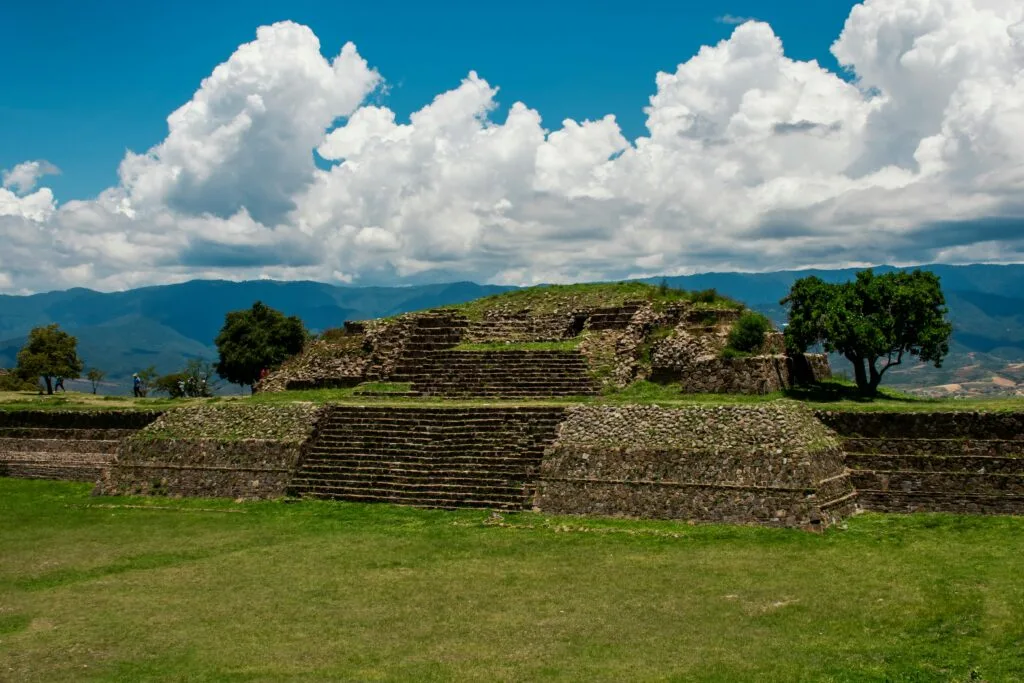The Cultural Heart of Mexico
Oaxaca City, the capital of Oaxaca state in southern Mexico, is a vibrant destination known for its rich indigenous culture, colonial architecture, and world-renowned cuisine. Nestled in the Central Valleys of Oaxaca, this charming city offers a perfect blend of history, art, and gastronomy. From colorful markets and ancient ruins to mezcal tastings and lively festivals, Oaxaca City promises an unforgettable Mexican experience.
Essential Oaxaca City Information
- Language: Spanish (some English spoken in tourist areas)
- Currency: Mexican Peso (MXN)
- Timezone: Central Standard Time (CST) UTC-6
- Visas: Many countries can enter visa-free for up to 180 days
- Tipping: 10-15% in restaurants; not required but appreciated for other services
Where to Stay in Oaxaca City: Top Neighborhoods for Tourists
Centro Histórico
The heart of Oaxaca, Centro Histórico is home to the city’s main attractions, including the Zócalo and Santo Domingo Church. This area is perfect for first-time visitors, offering easy access to museums, restaurants, and colonial architecture.
Jalatlaco
A charming, colorful neighborhood just east of the city center, Jalatlaco offers a more tranquil atmosphere. Its cobblestone streets, street art, and local cafes make it ideal for those seeking a more authentic, laid-back experience.
Reforma
Located north of the center, Reforma is a modern, upscale area known for its boutique hotels, trendy restaurants, and nightlife. It’s a great choice for those who want to experience Oaxaca’s contemporary side while still being close to the historic center.
Xochimilco
One of the oldest neighborhoods in Oaxaca, Xochimilco offers a glimpse into traditional Oaxacan life. Known for its aqueduct and artisan workshops, it’s perfect for travelers looking to immerse themselves in local culture.
La Noria
A residential area south of the center, La Noria offers a more relaxed, family-friendly atmosphere. With its parks and affordable accommodations, it’s ideal for longer stays and those traveling with children.
Must-See Sights in Oaxaca City
- Templo de Santo Domingo: A stunning baroque church and former monastery, now also housing a cultural museum.
- Zócalo: The main square, perfect for people-watching and experiencing local life.
- Monte Albán: An ancient Zapotec capital located just outside the city, offering impressive ruins and panoramic views.
- Mercado 20 de Noviembre: A bustling market where you can sample local cuisine and buy traditional crafts.
- Museo de las Culturas de Oaxaca: Located in the Santo Domingo cultural center, it showcases the region’s rich history.
- Jardín Etnobotánico de Oaxaca: A botanical garden featuring native plants of Oaxaca, offering guided tours.

Discover Oaxaca City’s Hidden Gems
- Biblioteca Infantil de Oaxaca: A charming children’s library with a beautiful mural-covered exterior.
- Textile Museum of Oaxaca: A small but fascinating museum showcasing the region’s rich textile traditions.
- Mercado de la Merced: A less touristy market offering a glimpse into everyday Oaxacan life and cuisine.
- Museo de Filatelia: An interesting stamp museum housed in a beautifully restored colonial building.
- Centro de las Artes de San Agustín: A former textile factory turned art center, located just outside the city.
Food Highlights: Must-Try Oaxacan Dishes
- Mole: Oaxaca is famous for its seven moles, complex sauces made with various ingredients including chocolate.
- Tlayudas: Often called “Oaxacan pizza,” a large tortilla topped with beans, cheese, and meat.
- Chapulines: Seasoned and toasted grasshoppers, a popular snack and ingredient.
- Tamales Oaxaqueños: Steamed corn dough filled with mole and wrapped in banana leaves.
- Mezcal: The region’s traditional agave-based spirit, available in many varieties.
6 Essential Tips for Visiting Oaxaca City
- Time Your Visit: Consider visiting during one of Oaxaca’s famous festivals, like Guelaguetza in July or Día de los Muertos in November.
- Take a Cooking Class: Learn to make traditional Oaxacan dishes and gain insight into the local culture.
- Visit the Markets: Explore the city’s markets not just for shopping, but to experience local life and cuisine.
- Stay Hydrated: Oaxaca’s high altitude can lead to quicker dehydration. Drink plenty of water, especially if consuming alcohol.
- Explore on Foot: The city center is very walkable. Take advantage of this to discover hidden corners and local spots.
- Take Day Trips: Use Oaxaca City as a base to explore nearby attractions like Hierve el Agua and the Mitla ruins.
How to Get to Oaxaca City
By Air: Oaxaca is served by Xoxocotlán International Airport (OAX), located about 7 km south of the city center. It offers domestic flights from major Mexican cities and some international connections, primarily to the United States.
By Bus: Oaxaca has excellent bus connections to many Mexican cities. The main bus station, Central de Autobuses de Oaxaca, is located about 2 km northwest of the city center and offers services to destinations like Mexico City, Puebla, and San Cristóbal de las Casas.




